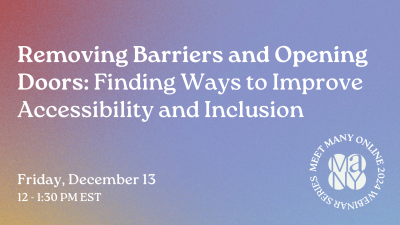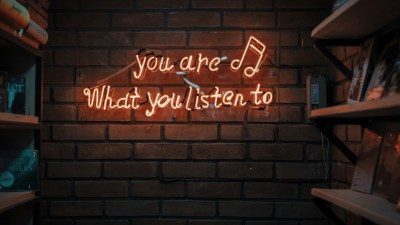
Though it may still feel like a long way off, the United States’ 250th anniversary is rapidly approaching. Right now, the US Semiquincentennial Commission, federal agencies, state history organizations, and individual museums throughout the country are all preparing for the America 250 commemoration, and many more will join them soon. This summer, planning that has been mostly behind the scenes will enter a more public—and more urgent—stage.
In 2026 and the years leading up to it, the Semiquincentennial anniversary of our founding will be the center of public conversation and activity, presenting a huge opportunity to museums and other history organizations. From high-profile, national signature programs through locally organized community efforts, the 250th anniversary will encompass a range of historical, educational, and cultural initiatives across a wide variety of program types and in all areas of the United States. Already, more than a dozen states have organized state-level 250th commissions and federal entities like the National Park Service, Smithsonian Institution, National Endowment for the Humanities, and others have all begun outlining their plans. Even Major League Baseball has scheduled its All-Star Game in the summer of 2026 for Philadelphia. The 250th will be an anniversary that commands the public’s attention like little else can do.
As we approach the five-year mark to July 4, 2026, every museum should be thinking creatively and ambitiously about what they want the 250th to look like in their community and what kind of impact they hope to achieve.
While the US Semiquincentennial Commission outlined a broad vision for the commemoration in its 2019 Inspiring the American Spirit report—describing a grassroots commemoration that educates, engages, and unites the country by exploring all of American history—the specifics of that commemoration will mostly be left for institutions and communities to decide for themselves. Because the 250th is designed as a broad, decentralized, and nationwide commemoration, even museums that are skeptical of the country’s founding narrative or feel little connection to 1776 will be able to use this opportunity to reach new audiences, try new projects, and renew public engagement with history.
Skip over related stories to continue reading articleUltimately, the Semiquincentennial will be whatever we—communities, museums, cultural and educational institutions—decide it should be, but we need to act now. As we consider our plans, museums would do well to keep in mind the incredible opportunities that will be open to us as attention towards and funding for 250th-related projects increase in the lead-up to 2026. In short, the 250th presents a once-in-a-generation opportunity to transform the nation, and museums should play a central role.
Although the possibilities are limitless, recent research and publications that consider civics, history, and the Semiquincentennial suggest museums can have their greatest impact in two critical areas. First, the 250th will enable museums to help audiences engage with a fuller story of our nation’s history. They can provide an honest look at the diverse people and complex events of our past, helping to build a stronger, more widely shared historical foundation for the nation, one that can help us better understand the present. Second, museums can help repair the nation’s civic fabric. By positioning themselves as critical community anchors and providing opportunities for mutual understanding, museums can help audiences develop and practice the civic skills needed to maintain our democracy.
2026 could be a transformative moment for the nation and for the museum community. Just as the Bicentennial era saw profound changes in the ways history institutions operated and how the public engaged with history, the Semiquincentennial could have a tremendous impact on the nation’s history and museum community. We need to prepare now to take advantage of these opportunities.
A More Complete Story of American History
History has had a major moment over the past several years. Amid a national reckoning with the United States’ history of slavery and racial violence, contentious conversations about history have arisen in the news, on social media, in Congress and state legislatures, and at our institutions, revealing deep divisions in the ways we interpret the American past. These divisions raise questions that are sure to be at the heart of the 250th commemoration: What is the legacy of the founding era? How do we reconcile the innovations of our democracy and rights-based constitution with the country’s repeated failures to live up to its ideals? How can we craft a more widely shared story of our past, one in which everyone sees themselves represented? As historian Jill Lepore and others have argued, the absence of a national historical narrative that is both inclusive and shared leaves us with a shaky foundation upon which to build collective civic action or mutual understanding.
The approach of the 250th anniversary offers a rare opportunity to renew engagement with history, to ensure everyone sees themselves in the American story, and to help audiences understand how the diverse people of our past all shaped the nation. By helping us reach a wider swath of the American public, the 250th commemoration can help history museums and other institutions make clear to our visitors not only that history matters, but that their history matters. In the lead-up to 2026, museums can serve their communities and transform the nation by modeling historical thinking, inviting audiences into the historical process, and transparently sharing the complexity and ambiguity in our history. It’s a tall order, but as one of the sources of history most trusted by the public, museums have a critical role to play in sharing a fuller story of our nation’s past.
Several recent reports about history and civic engagement reveal just how high the stakes are and how difficult the work will be as we approach the Semiquincentennial. In Our Common Purpose: Reinventing American Democracy for the 21st Century, a commission convened by the American Academy of Arts and Sciences notes that “Polarized depictions of American history—the triumphal and the genocidal—continue to divide us and impede productive civic collaboration.” A recent survey from the American Historical Association found that “84 percent of Republicans believe history should celebrate our nation’s past, while 70 percent of Democrats think history should question it.”
The American Association for State and Local History’s (AASLH) “Framing History” project, meanwhile, has found that many Americans are reluctant to resolve these tensions about how to interpret history. Instead, those in positions of relative privilege in our society “tend to use their comfort level to determine what to learn and what to ignore about past injustices and trauma,” rather than more salient considerations like their relevance to present-day challenges or conversations about equity. Similarly, the AHA survey about Americans’ engagement with history found that white respondents were “more than twice as likely as people of color to feel that the histories of racial and ethnic minorities garner too much attention.”
There are no easy ways to resolve these competing perspectives, but new research also suggests there’s reason for optimism about the potential for museums to meaningfully shift public understanding toward a more inclusive historical narrative. In AASLH’s recent “Communicating About History” report, we found that, despite the challenges above, many Americans understand that including additional perspectives provides a more accurate view of history. Further, some members of the public recognize that “a shared understanding of the past creates a sense of belonging” and can encourage people to “to take an active role in and feel responsible for their community.” Through a few strategic communication shifts (with specific recommendations coming later this year), museums can ensure their messages take advantage of these opportunities as we approach the 250th.
Additionally, a recent report by the Humanities Indicators project about the place of the humanities in American life found that a majority of both self-reported liberals and conservatives had favorable views of the term “history,” something not found for other humanities terms. Although political leanings may incline individuals to divergent understandings of what history is, their shared appreciation of history offers a common foundation to build on. Likewise, the AHA survey reported that more than three-quarters of respondents felt it was “it was acceptable to make learners uncomfortable by teaching the harm some people have done to others,” including 78 percent of Democrats and 74 percent of Republicans. It will still be a long road, but with strategic and collective action—the kind AASLH hopes to encourage with our Making History at 250 Field Guide—museums can have a meaningful impact on the way the public thinks about history.
As the Our Common Purpose report notes, an inclusive, honest, and widely-shared national historical narrative is essential for strengthening our democracy. Museums have a critical role to play in guiding the public through “uncovering the narratives that unite us, and reckoning with those that divide us,” as we renew civic engagement in the lead-up to 2026. Sharing United States history in a way that celebrates our core democratic ideals, laments our failure to fully live up to them, and does justice to our striving towards a more perfect union is messy, difficult work—but the 250th commemoration demands that museums take it on. Although our history is difficult, complex, and diverse, full of tension and ambiguity, “that doesn’t mean history is meaningless,” Jill Lepore notes, “or that anyone can afford to sit out the fight.”
Transforming Our Communities
The Semiquincentennial offers an opportunity for museums not only to transform what they share with their audiences, but to reinvent how they serve their local communities, repositioning themselves as a vital civic resource. Museums can serve as critically important forums, helping visitors and community members hone their ability to listen with empathy, discuss ideas with humility, engage in difficult conversations, and strengthen the other civic skills required to collectively solve societal challenges. Although many museums have invested time and resources in community engagement over the past decade, the Semiquincentennial presents a chance for more transformational change across our field.
Here again we can turn to recent research and publications for ideas about what that change might look like. In Our Common Purpose, for example, the authors note that “Americans are hungry for opportunities to assemble, deliberate, and converse with one another,” a point that has taken on greater salience after a year of extended isolation from our fellow citizens and contentious debates over history and justice in American society. By serving that desire and offering a space for community members to connect with one another—referred to in the report as institutions’ “bridging capacity”—museums can provide a crucial ingredient for mending America’s fragmented civil society. Museums (along with libraries, houses of worship, and other organizations), can “offer people ways to be involved in the lives of their communities that do not involve voting or attending public hearings or watching debates.” As we approach 2026, museums should further embrace the opportunity to convene community conversations and guided dialogue. Museums are uniquely positioned to foster the development of skills “fundamental to democratic citizenship” and to provide spaces where community members can “develop respect for diverse opinions and commit themselves to a common good.”
By serving as a “third place” in their communities and offering a venue for well-informed civic conversations, museums can help replace something lacking in our broader media—especially social media—environments. In their recent article in The Atlantic offering suggestions for how to prevent the internet from further undermining American democracy, Anne Appelbaum and Peter Pomerantsev note the decline of voluntary associations in the United States (VFW Halls, elks clubs, churches, and other associations) as one of the reasons Americans seem so drawn to the tribalism of partisan politics and social media echo chambers. Museums could step into that void in a meaningful way to provide spaces for their community members to gather and discuss ideas, interrupting some of the forces fracturing our civil society.
Other efforts have already begun to connect history institutions with civic renewal. Allison Wickens, writing about trends in civics education in the Inclusive Historian’s Handbook, notes that many institutions of formal and informal learning are emphasizing the need “to teach civic dispositions, such as an appreciation and understanding of free speech and willingness to engage with those whose perspectives are different from their own” in their efforts to educate people for participation in democracy. Made By Us, a coalition of history organizations using history to drive civic engagement among young people, recently launched the first “Civic Season,” a new “annual tradition, held between Juneteenth and the Fourth of July, that mobilizes Americans to engage with our past, take action in the present, and shape the future.” Likewise, the Educating for American Democracy project, produced by a diverse cross-section of educators and scholars late last year, provides a framework for investing in civic learning, teaching not just historical concepts but the habits of mind required to continue advancing democracy. Museums have an opportunity to connect with these and other projects and they should take them seriously; with concerted effort in this direction—and real empathy for the diversity of opinions and perspectives in their community—museums could transform their role in society and American civic culture over the next five years.
Finally, providing these critical civic spaces and functions may not only help strengthen American civil society; it can strengthen museums’ bottom line. Last year, Zannie Voss and Jill Robinson noted in their report Arts and Cultural Organizations: In It for the Long Haul that museums and other cultural institutions must make themselves essential to the communities they serve if they are to emerge from the setbacks of the pandemic stronger and more resilient. “Resilient organizations will be those whose work is meaningful to a sufficiently large segment of the local community that cares whether it exists,” they argue. “Reopening will be an opportunity to send a signal about the role the organization wants to play in the local community moving forward.” As museums emerge from the pandemic this summer, they have an opportunity to emphasize their critical societal contributions—promoting civil discourse and civic understanding and building mutual understanding in their communities—and call attention to the forthcoming 250th commemoration.
Ultimately, the 250th anniversary presents museums an unprecedented opportunity to renew public engagement with history and strengthen our nation’s civic fabric. As museums approach the Semiquincentennial, they should view it as an opportunity to consider anew: who do our institutions serve and how do we serve them? What kind of impact can museums have on society? With creative thinking, aspirational vision, and bold planning, the 250th might help us arrive just in time at some truly transformative answers.








Comments